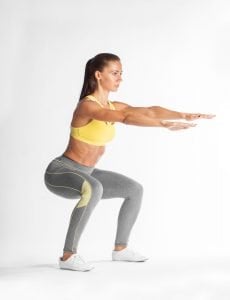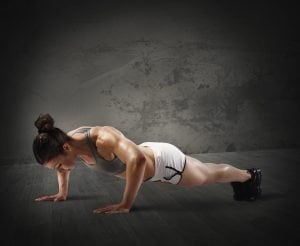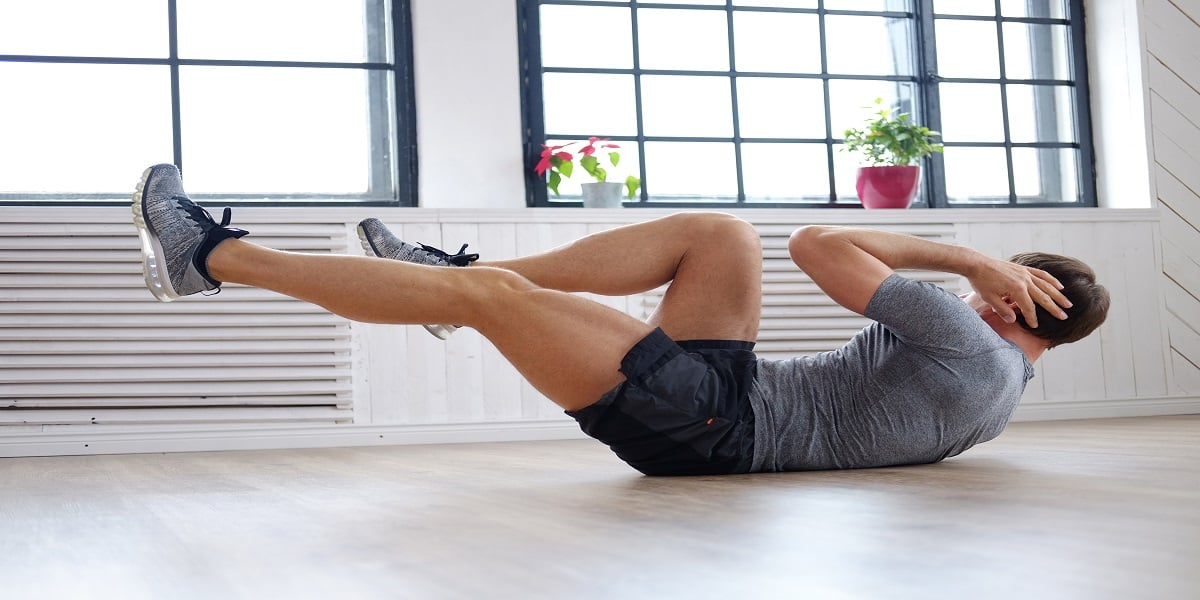Getting a good workout in doesn’t mean you have to be in a gym, nor does it require you to have gym equipment, but how?
Let’s break it down in this article.
Can A Home Workout Be As Effective As A Gym Workout?
If you’re interested in exercising for general wellness, weight maintenance and/or weight loss then the answer is yes, a home workout can definitely be as effective as a gym workout.
There are two approaches to exercising at home:
– Home gym
Bodyweight exercises/workouts are exactly as they sound: movements accomplished mainly with the natural resistance or weight of the body.

The great thing about body weight exercises is you can perform them any time, anywhere and you definitely do not need additional tools or equipment.
So even if you’re stuck in a hotel somewhere in a four-day conference, you can still get a good workout. Not being able to go to a gym is no excuse to skip your daily workout.
What Are Examples Of Bodyweight Exercises
1. Squats – Squatting is a must if you want to build lower body strength. It challenges the hamstrings and calves  naturally, increasing resistance to leg fatigue. It tones muscles easily too, because the entire upper body is situated on top of the axes supported by the hamstrings and calves.
naturally, increasing resistance to leg fatigue. It tones muscles easily too, because the entire upper body is situated on top of the axes supported by the hamstrings and calves.
To perform a squat, stand straight with feet slightly apart and parallel to your arms.
Slowly lower your backside as if sitting on a chair. Make sure that your knees do not shoot past your toes. Let your hamstrings and other muscles take the brunt of the movement.
Squats are highly recommended for folks who want to increase their metabolism. Focusing on your leg muscles also burns more calories in the long term.
2. Planks – Plank exercises improve core strength and stability, making it easier for a person to utilize his abdominal muscles in all kinds of movements like pulling, pushing, lifting, etc.
Generally speaking, the longer you can hold your body in a plank position, the better. The plank is a timed exercise, meaning you have to set a goal (e.g. 60 seconds) and try to reach that goal without sacrificing form.
While performing a plank, concentrate on giving your core (abdominal) muscles most of the work needed to remain stable, regardless of what kind of plank exercise you’re performing. It’s going to be tough in the first few weeks, but just hold on – your abdominal muscles will soon toughen up!
3. Push-ups – Push-ups are awesome for building upper body ruggedness and chest muscle toughness. This  movement requires the concerted effort of the shoulders, arms, back muscles and all joints and muscles in between, making it an effective strengthening exercise.
movement requires the concerted effort of the shoulders, arms, back muscles and all joints and muscles in between, making it an effective strengthening exercise.
To safeguard your shoulder joints and improve your overall form, tuck your elbows closer to your body while performing a rep. During the negative phase (lowering of the body), most of the strain should be handled by the chest muscles. All other muscles should only be there to assist – including the back muscles and most especially the arm muscles.
Can You Create A Mini Home Gym Without Breaking The Bank
Yes, it’s possible to create a functional mini-gym without spending too much.
The types of tools and equipment you should buy will depend on what you’re trying to accomplish with your exercises at home. Let’s have a broad overview of the common machines and tools you can use to strengthen and tone your body.
1. Elliptical machine – An elliptical machine allows walking and running motions while reducing the impact and strain on leg joints. Compared to jogging, using an elliptical machine is easier on the body overall so you can focus on perfecting your form and hitting your target exercise length.
2. Resistance bands and cords – Resistance bands are made of resilient rubber and plastic; they are used to strengthen the whole body by simulating cable machines and regular free weights, such as dumbbells.
A single resistance cord can be used for bicep curls, triceps extensions and a variety of arm exercises. Multiple resistance bands/cords can be linked to door frames to simulate cable machines in gyms.
3. Free weights – Free weights combined with a weight bench that can fit into your spare room or basement will allow you to perform a variety of exercises that involve both the upper and lower body.
The great thing about buying free weights is you don’t have to purchase them brand new. There are lots of second hand weights floating around the Web and maybe you can find a couple of these in yard sales in your area. You can save money while becoming fitter!
4. Treadmills – Treadmills are easy enough to use, but they’re not too easy on the joints. Buy a treadmill only if you aren’t rheumatic or if your rheumatism is under control. Folks with joint inflammation should slowly accustom their bodies first to the unique movements allowed by a treadmill, especially the ones with variable speed control. Don’t rush into higher speeds if you haven’t mastered walking gently on the treadmill. Otherwise, you may end up with not just sore muscles, but possibly damaged joints.
5. Stability balls – A stability ball is a large, inflatable ball used to add instability to a movement. Placing yourself atop a stability ball while performing the simplest exercises adds an element of imbalance, which makes your muscles work harder. More muscle groups are activated in the process, making your exercise more effective.
A variation of the stability ball is the half-sized Bosu ball. You can stand on a Bosu ball while performing a movement. It functions like a stability ball but aims to add instability to the whole body (including the feet and legs) during a movement.
The End Is Near…
As a final word on exercise, it would still be best to consult with your physician about starting any exercise regimen, especially if you have conditions like diabetes and high blood pressure.
Not everyone can safely exercise especially when there are cardiorespiratory and/or vascular issues involved. If you’re unsure, always ask your doctor first. Your doctor should be able to ascertain what types of exercises are safe for you as well as ones that you shouldn’t do to avoid aggravating your current health condition.
